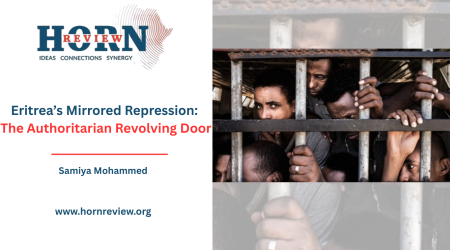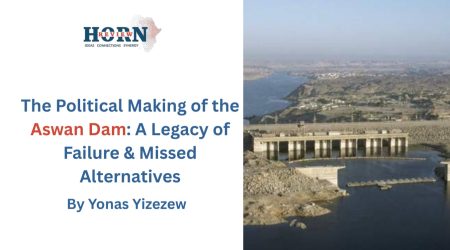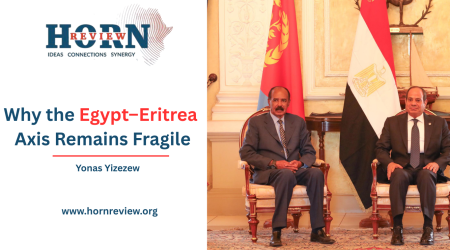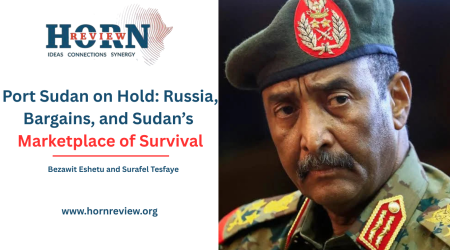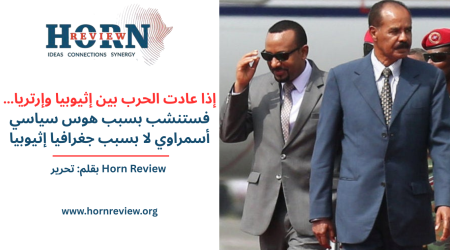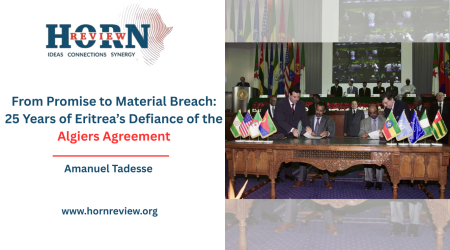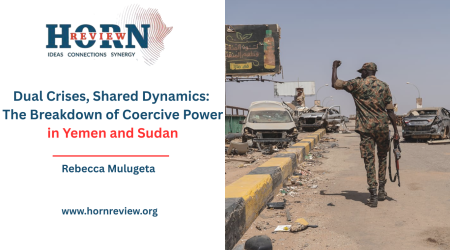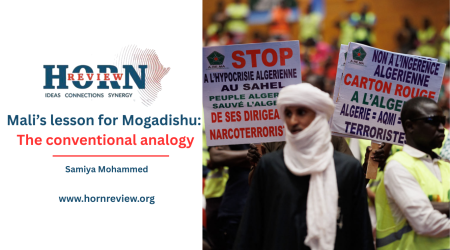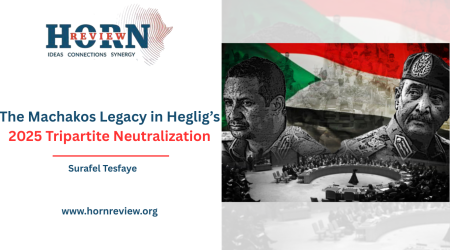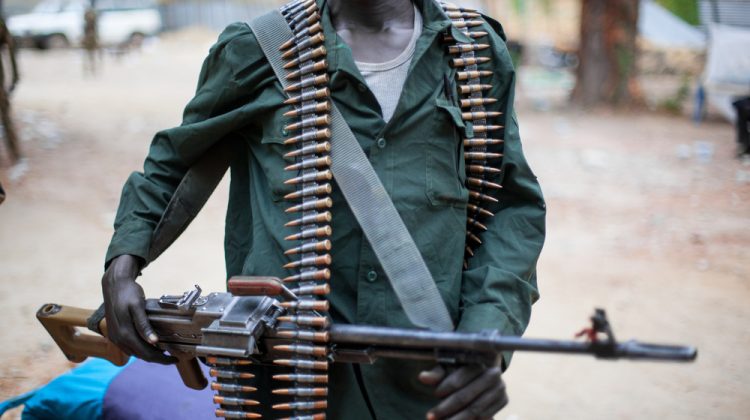
30
Jul
The Limits of Mandate: Assessing IGAD’s Role in Peace and Security in the Horn of Africa
The Intergovernmental Authority on Development (IGAD), as a cornerstone regional economic community in the volatile Horn of Africa, faces a great paradox concerning its peace and security mandate. Despite its advanced institutional architecture and a foundational commitment towards regional stabilization, its efforts often come under critique, precipitated by a common perception that it doesn’t take an active hand enough in a region grappling with deep-seated grievances.
The formation of the Intergovernmental Authority on Development (IGAD) started in 1986 with a chief focus of curbing environmental degradation as well as famine mitigation, eventually leading to strategic restructuring in 1996. Its reconstituted structure holds an expanded mandate encompassing various political and security collaborations, underscoring a clear recognition of the intricate and indivisible links between development and stability (IGAD, n.d.-a).
IGAD’s main objectives, formalized in its 1996 Agreement and various plans of action, though diverse, for example, Vision 2050 as well as the Regional Strategy and Implementation Plan for 2021–2025 (IGAD, 2021), emphatically highlight a resolution for promoting peace and stability with a formation of strong conflict prevention, management, and resolution through dialogue.
The functions are essentially fused in the organizational structure, with the Assembly of Heads of State and Government and the Council of Ministers at the helm of policy-making, and backed by a dedicated Secretariat. It should be noted that the Peace and Security Division (PSD), which was created in 2003, serves as the main department for this mandate (IGAD, n.d.-b).
The broad mandate of the Peace and Security Division (PSD) is implemented through specialized entities. Such organizations include the Conflict Early Warning and Response Mechanism (CEWARN), which aims at developing evidence-based analysis to allow for intervention promptly; the IGAD Security Sector Program (ISSP), which focus on cross-border threats and challenges; the IGAD Centre of Excellence for Preventing and Countering Violent Extremism (ICEPCVE), which utilizes soft power approaches; the Mediation Support Unit (MSU), which enhance preventive diplomacy; and the Post-Conflict Reconstruction and Development (PCRD) Unit, which is focused on addressing long-term peacebuilding (IGAD, n.d.-b). The existence of such meticulously designed and multi-faceted architecture strongly suggests a deliberate and comprehensive institutional focus on the region’s complex security challenges.
Indeed, IGAD’s historical record is punctuated by instances of impactful intervention, demonstrating its latent capacity when political conditions align. Its mediation efforts were instrumental in navigating the protracted Sudan Peace Process, culminating in the landmark 2005 Comprehensive Peace Agreement (CPA) that eventually paved the way for South Sudan’s independence. More recently, IGAD has played an active part in attempting to stabilize Sudan’s ongoing conflict, convening summits and establishing a Quartet tasked with creating momentum for negotiation and humanitarian access. IGAD’s effective intervention in 2013 concerning South Sudan reaped significant dividends in the 2018 Revitalized Peace Agreement (R-ARCSS). In addition, the organization has remained a continuous actor in the Somalia Peace Process, supporting the re-establishment of transitional governments and contributing to the enhancement of security capabilities.
The formal record unequivocally demonstrates IGAD’s potential for decisive action, especially when supported with sufficient political will from its constituent countries as well as robust international support. Nevertheless, the efficacy of these efforts has been decidedly mixed, marred by inconsistencies and periods of striking inactivity.
Critics frequently point to its notable absence or limited role in critical junctures, such as the 1998-2000 Ethiopia-Eritrea war or its delayed and secondary engagement in the Darfur conflict. Such uneven and erratic operational presence points to the extensive and innate underlying barriers that consistently impede IGAD from fully realizing its comprehensive mandate.
The perceived lack of focus on peace and security should thus not be seen as a structural deficiency but a systemic outcome of deep-seated internal, member-state, and regional geopolitical challenges that severely constrain IGAD’s operational effectiveness.
Firstly, internal institutional and normative constraints present formidable limitations. Even with a comprehensive framework in place, practical implementation often falls short of expectations. Because of a significant gap between the theoretical design of its mechanisms and their operational robustness, IGAD covers a fragmented contribution. Another critical limitation involves a general lack of capacity, featuring acute shortages of human resources, specialized skills, as well as fundamental operational capacities. Such restrictions directly impede IGAD from responding promptly as well as from sustaining intricate security operations.
Compounding this challenge is a heavy dependence on external funding. Although external partners, notably the European Union, provide crucial funding, this high reliance can inevitably compromise IGAD’s institutional autonomy and threaten its long-term sustainability. Such a scenario makes it susceptible to donor priorities that might not automatically be congruous with the core regional needs, along with challenges for donor-funded projects that struggle to transition into permanent programs without sustained external financing.
Secondly, and arguably the most formidable barrier, are the highly intricate and often contradictory intra-state political dynamics of IGAD members. The Horn of Africa is a crucible of historical mistrust, deep-seated suspicion, and intense rivalries, with many of its constituent nations exhibiting militarized political cultures where leaders frequently ascend to power through violent means. A core tension lies in the principle of non-intervention in internal affairs, a cornerstone of international law and IGAD’s founding agreement. While ostensibly designed to prevent external meddling, this principle is paradoxically and frequently contradicted in practice. Member countries have a history of intervening in each other’s internal affairs, often via proxy funding of dissident insurgencies or oppositional elements, due to a variety of ethnic solidarity, ideological affinity, or localized strategic interests.
The deep structural incongruence of action and rhetoric of the state leads to a significant loss for IGAD’s institutional credibility and its capacity to assume a strong and impartial leadership role in regional conflict management. Divided hegemony of leading nations like Ethiopia and Kenya, where no single state can assert undisputed regional dominance, further fragments collective action. This persistent competition for regional influence often compels member states to prioritize narrow national security interests over broader, collective regional security objectives.
The tragic phenomenon of militarized peace processes, wherein member states prepare for or actively engage in war even while ostensibly mediating peace, highlights an entrenched regional political culture that renders the construction of robust and consensual regional security structures exceptionally difficult. Such pervasive distrust, coupled with an active politico-security culture where significant prioritization is given to warfare as an enduring first principle, directly inhibits IGAD from resolving conflict both authoritatively as well as impartially.
Thirdly, IGAD’s peace and security efforts are profoundly shaped by the Horn of Africa’s inherent geopolitical complexities and the persistence of deep-seated root causes of conflict. The region functions as a strategic nexus of diverse ethnic groups, highly porous borders, and critical geostrategic importance, making it susceptible to various forms of instability. The increasing nexus between climate change and conflict represents a significant and escalating driver of instability. Frequent and severe droughts and floods exacerbate existing socio-economic vulnerabilities, intensifying competition over diminishing natural resources like fertile land and water, often escalating into violent communal conflicts (IASC, 2023).
Additionally, owing to its geopolitical importance for both global maritime commerce and security, it attracts numerous external powers. Such unwarranted interferences can inadvertently, or even intentionally, fuel tensions and perpetuate conflicts by providing war assets or diplomatic cover to warring parties.
The paradox surrounding IGAD’s involvement in peace and security is not due to a lack of intention or design miscalculation, but perhaps due to fundamental systemic challenges inhibiting its widespread and effective implementation. In order to fill the persistent gap between its comprehensive mandate and its challenging operational reality, IGAD must pursue a multi-pronged and politically astute reform agenda. This imperative includes fostering genuine political will among member states to devolve greater operational autonomy to the Secretariat, accompanied by significantly improved institutional capacities through sustainable and locally generated financing mechanisms, actively promoting truly inclusive approaches that systematically engage civil society and local communities in peacebuilding, as well as adaptively improving its response mechanisms to address emerging multi-dimensional threats like climate-induced conflicts.
It is only through such concerted, policy-driven, politically determined, and institutionally strong endeavors that IGAD can realistically address its perennial challenges and eventually realize its profound potential as a formidable and effective beacon of peace and stability in the volatile Horn of Africa.
By Tsega’ab Amare, Researcher, Horn Review
References
- Intergovernmental Authority on Development (IGAD). (2021). IGAD Regional Strategy and Implementation Plan 2021-2025.
- Intergovernmental Authority on Development (IGAD). (n.d.-a). About IGAD | IGAD Structure | IGAD Regional Strategy. https://igad.int/about/
- Intergovernmental Authority on Development (IGAD). (n.d.-b). Peace & Security Division. https://igad.int/peace-security/
- United Nations Office for the Coordination of Humanitarian Affairs (OCHA). (2023). Climate change and conflict in the Horn of Africa: An overview. OCHA Regional Office for the Horn of Africa.
- Inter-Agency Standing Committee (IASC). (2023). Horn of Africa Drought: Regional Humanitarian Overview & Call to Action. United Nations Office for the Coordination of Humanitarian Affairs (OCHA).

